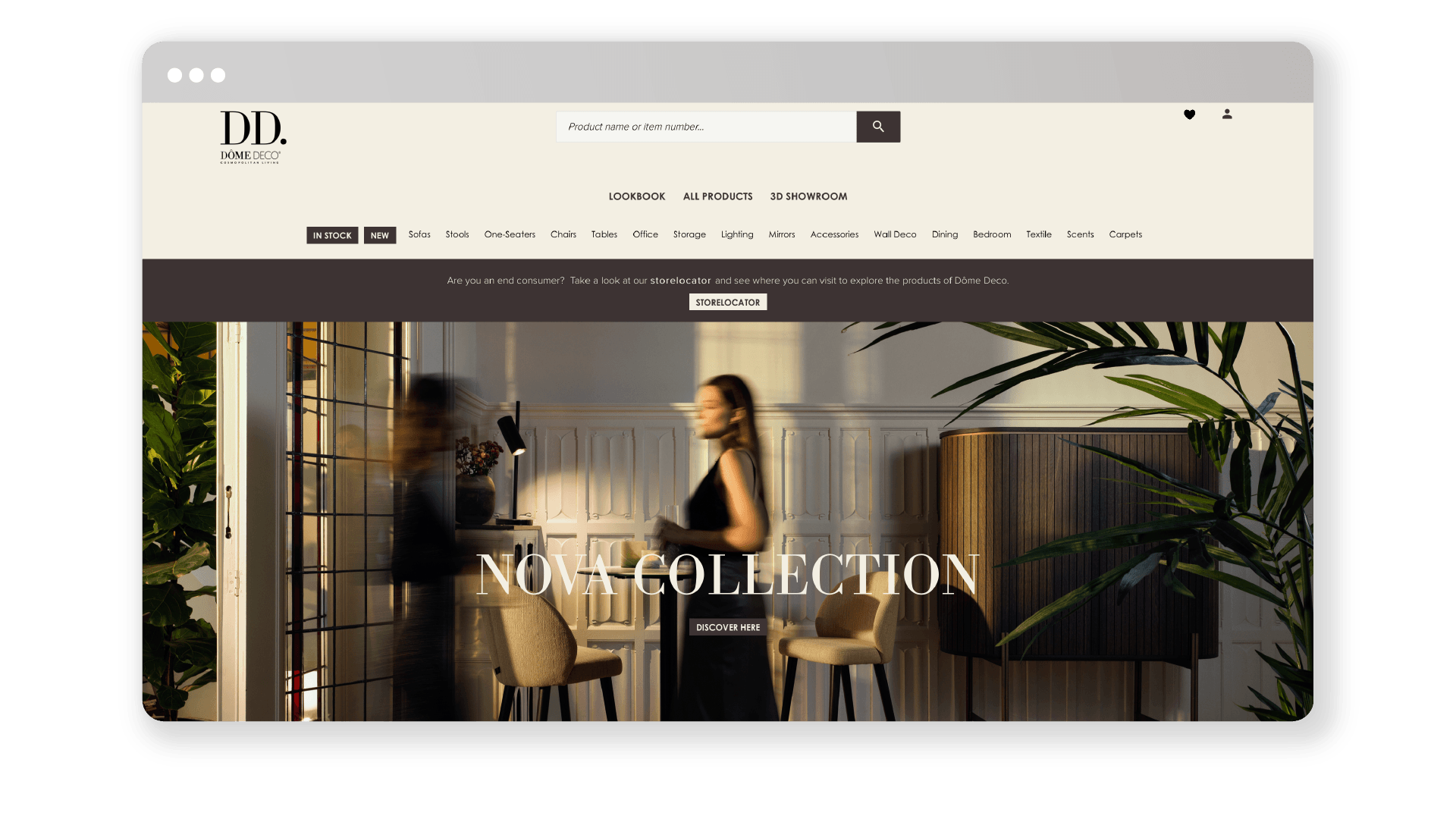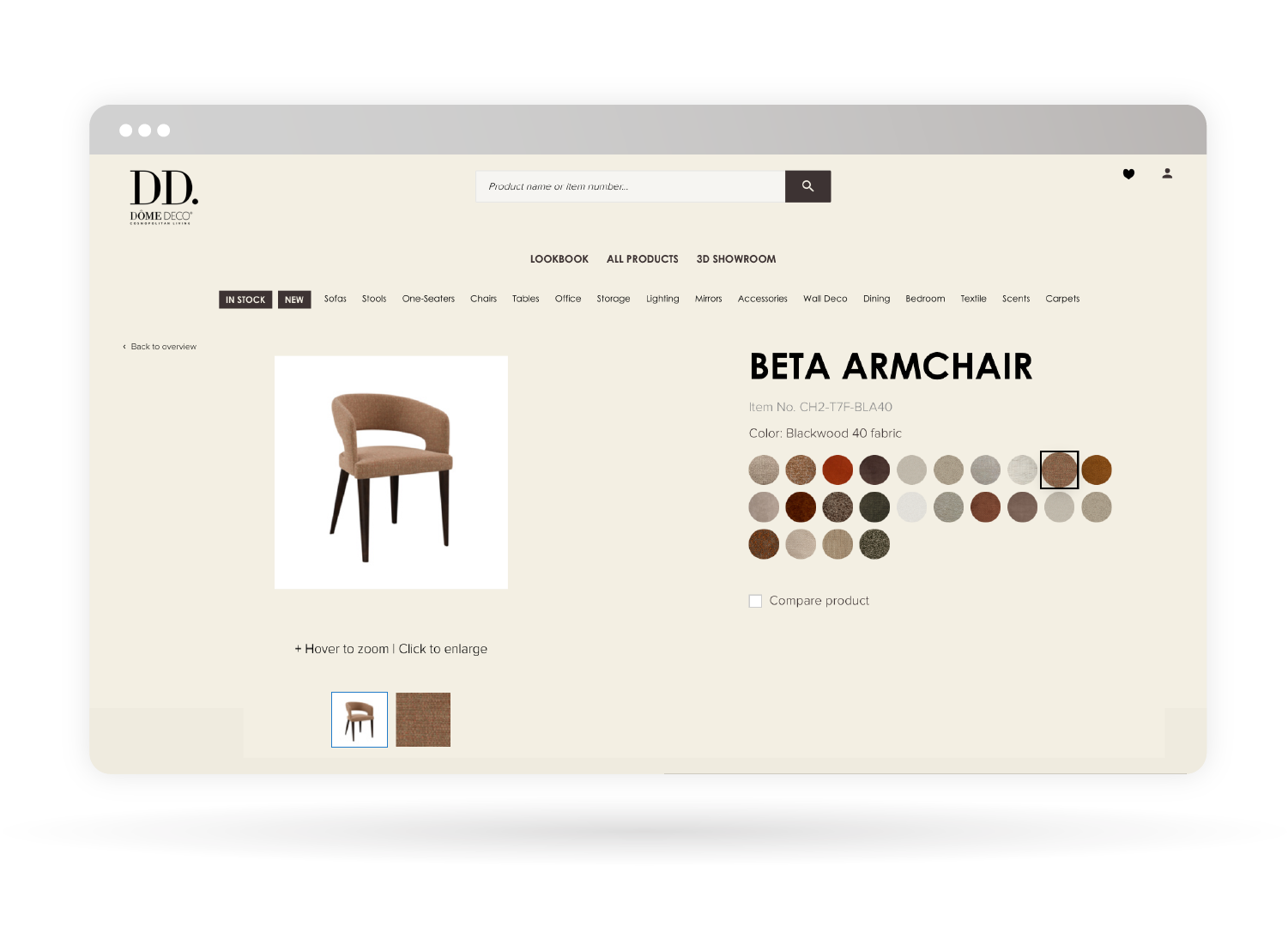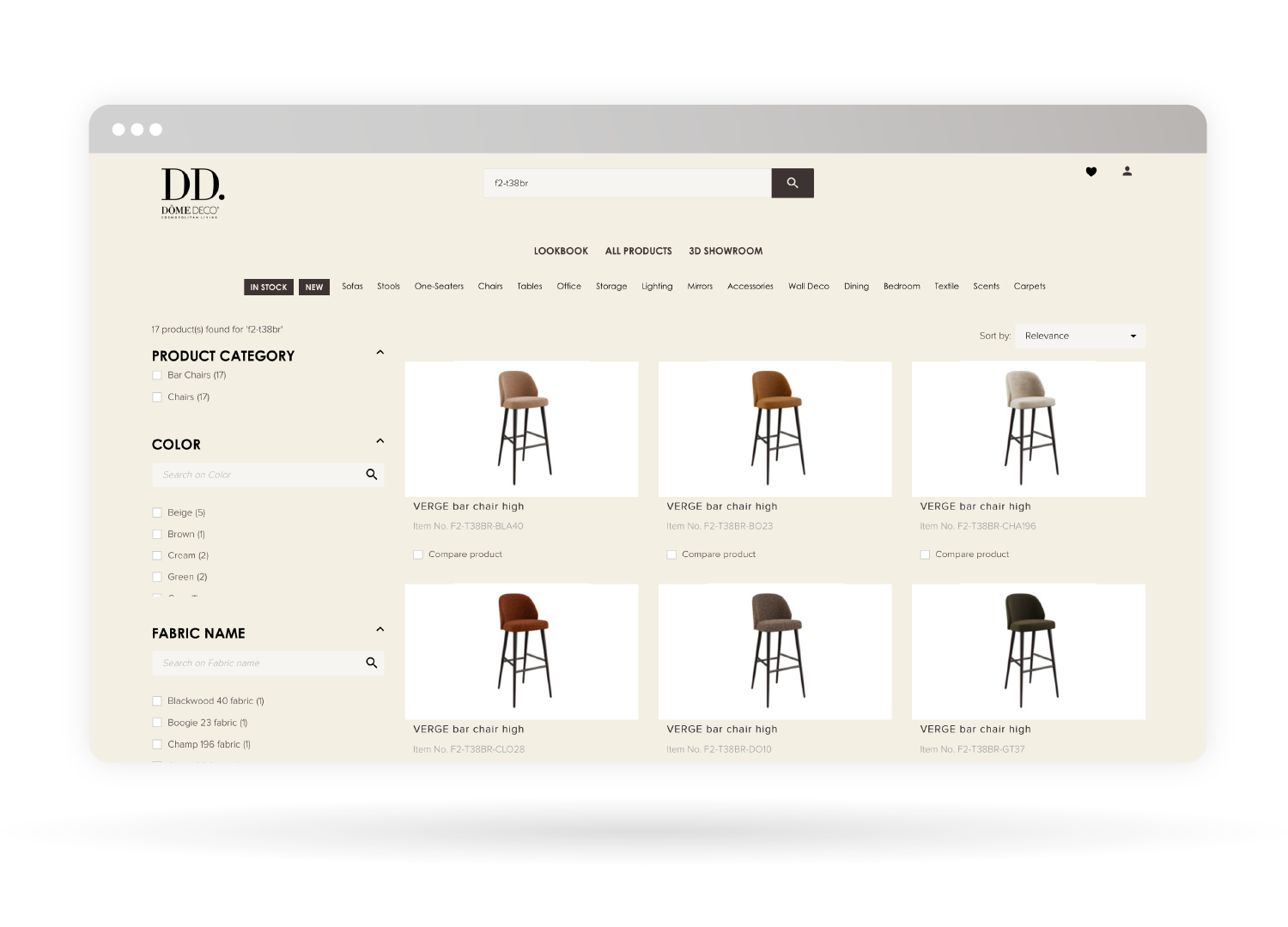
15%
of all orders are now placed online.


Aurelie, Marketing Manager at Dôme Deco, Discusses Digital Transformation
Read interview
of all orders are now placed online.

Streamlined sales process with iPad integration

New insights into customer behavior and sales patterns
We had the pleasure of sitting down with Aurelie, the dynamic Marketing Manager at Dôme Deco, to chat about their exciting journey in the world of B2B e-commerce. During our discussion, Aurelie shared insights into the unique challenges they faced with their previous platform, why they chose to partner with Sana Commerce, and the remarkable transformations they’ve seen since making the switch. From overcoming outdated systems to embracing a data-driven future, this conversation highlights Dôme Deco’s evolution and the newfound efficiencies that have empowered their team.

My name is Aurelie, and I’m the Marketing Manager at Dôme Deco. I’ve been with the company for around five years, and in that time, we’ve grown to a team of three marketers, which I now lead. Dôme Deco is an interior label specializing in creating and producing interior collections. We work closely with interior architects on various hospitality projects and sell our products through dealers. Our brand identity, Cosmopolitan, is all about creating warm, intimate interiors with a touch of luxury. We aim to inspire people worldwide through our designs.
Sana is our third partner, and it’s the largest and most feature-rich platform we’ve used. We chose Sana Commerce because of its ability to handle complex B2B scenarios, which was crucial for our diverse product range and international customer base.
One major complexity is that we only work with B2B, which means we need to protect our pricing and keep it from being accessed by end consumers. Additionally, we offer a wide range of products, from furniture to accessories, each with many variations. For example, our upholstered items, like sofas and chairs, can be customized with any of 28 different fabrics, which are categorized into five pricing tiers. This variety adds a layer of complexity to our pricing and the services we need to provide through our platform, such as enabling customers to filter products based on price or fabric.
While we don’t offer customization in the traditional sense, our customers can choose from a wide range of fabrics for our upholstered items. Pricing for these items is based on fabric categories, which required us to develop a structure that allows customers to easily filter and sort by price. This was a major project for us with Sana, as it’s crucial that customers can see all their options clearly. Moreover, we’re working on adding more detailed information, such as 3D files and technical drawings, to assist architects in their projects.

Going digital is essential in 2024, especially since we operate internationally. Our previous platform lacked flexibility and didn’t provide the marketing features we needed. We also wanted better integration with our new ERP system. With Sana, we found a solution that not only met our immediate needs but also provided room for future growth. The ability to easily update and customize our web store was a huge factor in our decision. Additionally, we were motivated by the need for a platform that could evolve with us and offer seamless updates and new features.
The biggest impact has been the data insights we now have. Previously, we had no visibility into customer behavior on our web store. Now, we can track everything, from product views to order sizes, which allows us to refine our strategies. Currently, about 15% of our orders are placed online, which is significant considering the physical nature of our products. What’s interesting is that a lot of our customers are using the platform to research—especially for more complex items like furniture—but they still prefer to come into the store to make the final purchase. This whole ROPO (Research Online, Purchase Offline) trend is something we’re seeing a lot of, and it’s playing a huge role in driving our overall sales, even if the transaction isn’t happening online.
The platform has also drastically improved our efficiency, especially for our sales team, who can now use iPads to scan and process orders directly through Sana, eliminating the need for separate scanners. This integration has streamlined our workflow and made it easier for our sales team to serve our customers.

Change is always challenging, but the response has been largely positive. Initially, there were some hesitations as the team adjusted to the new system. However, we made sure to listen to their feedback and adapt where necessary. The biggest advantage they’ve found is the ease of use with the new system—everything is more accessible, and the process of generating quotations or orders is much quicker. Our customers have also noticed the improved functionality, particularly those who frequently place orders or need to access detailed product information.
We’re still in the early stages of leveraging all the marketing features Sana offers, but we’re already seeing the benefits. For example, we can now create targeted promotions based on customer segments, which was something we couldn’t do before. We’re experimenting with different types of promotions, like offering discounts on specific product lines for certain customer groups, such as restaurant owners or hotel managers. This level of personalization is new for us, and we’re excited to see how it can drive more engagement and sales.
Flexibility and data insights are the biggest benefits. Being able to make changes ourselves without relying on external developers has saved us a lot of time and frustration. And the data—being able to see exactly what our customers are doing on the web shop—is invaluable. It helps us make informed decisions and tailor our offerings to better meet their needs. Also, the fact that Sana is continually evolving and offering updates means that our web shop can grow with us, which is crucial for our long-term strategy.

Learn how Labelmaster achieved a 50% increase in daily order processing with 20% less staff with Sana Commerce Cloud.

See how Sana Commerce is elevating the customer value and becoming an integrated solution provider.

How a leader in the automotive spare parts industry boosted operational efficiency with Sana Commerce Cloud.

Discover how Sana Commerce Cloud helps you enable your buyers online.